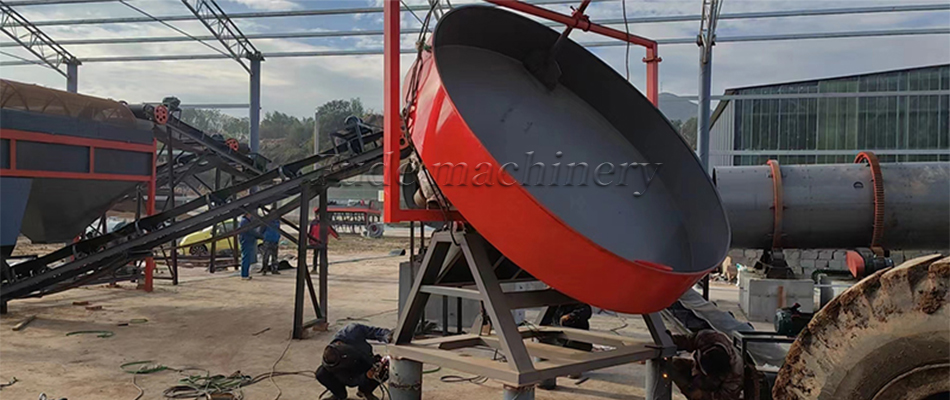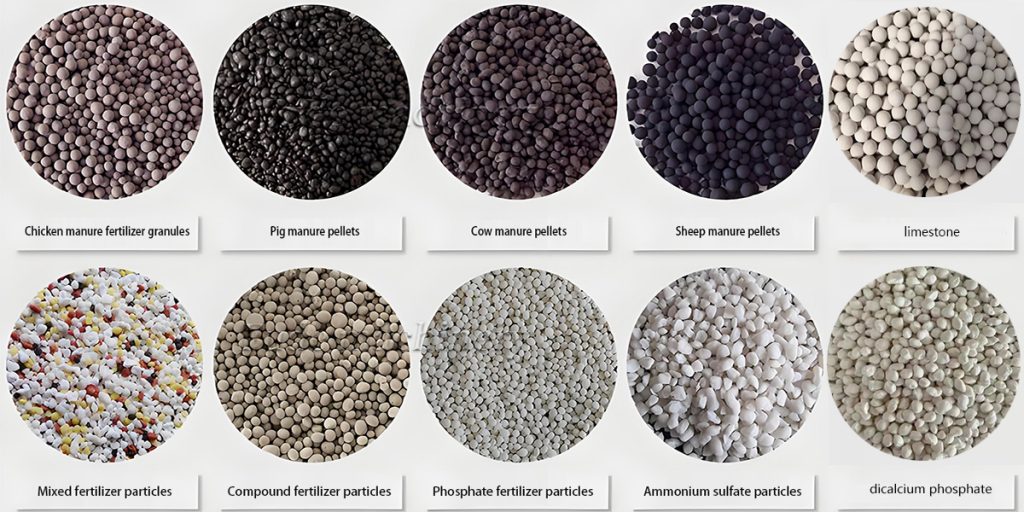How does disc pelletizing technology differ from other mineral fertilizer pelletizing methods?
194Mineral fertilizers demand specific raw materials to ensure optimal nutrient content and efficacy.
View detailsSearch the whole station
As a manufacturer of organic fertilizer equipment, I have seen many production lines in action. A common challenge new producers face is mastering the art of granulation. The disc pelletizer is a fantastic tool, but its effectiveness depends on getting several key factors right. Clients often ask me, “What are the key factors affecting the effect of disc granulation?” They also ask, “How can I optimize my production process to get the best results?”
The answer is that success comes from controlling two main areas: your raw material properties and your machine’s settings. It is a partnership between the material you feed in and the way you run the machine. Getting this partnership right is the secret to producing consistently high-quality, uniform pellets. At Fude Machinery, our job is not just to sell you a machine, but to help you master it. Let’s look at these factors and how you can optimize your entire process.
Last Updated: June 2025 | Estimated Reading Time: 18 minutes

This article will help you understand:
Before you even turn on the machine, the quality of your granulation is already being decided by your raw material. You can have the best machine in the world, but if the material is not prepared correctly, you will struggle. Think of it as baking a cake. You need the right ingredients before you start mixing.
The granulation process on a disc is like making a snowball. You need fine, packable snow. Your organic material must be crushed into a fine, consistent powder. If your material has large lumps, clumps, or long fibers, the pellets will be weak, irregularly shaped, and will easily fall apart. These lumps act like rocks in your snowball—they just don’t bind well. A fine powder (typically 50-80 mesh) provides a large surface area, which allows the particles to stick together uniformly when moisture is added.
Optimization Tip:

Moisture is the glue that holds your pellets together in a disc pelletizer. However, it is a delicate balance. There is a “granulation sweet spot” for moisture, usually between 30% and 50% for most organic materials.
Optimization Tip:
Yes, it matters a lot. Organic materials like animal manure and compost have natural binding properties. The organic compounds become slightly adhesive when wet, which helps form strong pellets. If your material is very low in organic matter or is a blend with inert materials, it may not have enough natural “stickiness.”
Optimization Tip:
Once your material is perfectly prepared, you can use the machine’s settings to fine-tune the granulation process. These are your control levers for pellet quality and size.
The angle of the disc is one of the most powerful adjustments you can make. A steeper angle means the material travels up the disc less and rolls off faster. This results in a shorter retention time on the disc, which creates smaller pellets. A shallower (more horizontal) angle forces the material to stay on the disc longer. This longer retention time allows the pellets to pick up more material and grow larger.
Optimization Tip:

The rotation speed controls the centrifugal force acting on the material. It needs to be balanced. The goal is to create a rolling, tumbling cascade of material, not to fling it off the disc.
Optimization Tip:
The way you add water is just as important as how much you add. You need a fine, even mist, not large, wet drops. Large drops will create localized wet spots and result in a sloppy mix of mud and dry powder. A fine mist coats the powder particles evenly, which is essential for uniform pellet growth.
Optimization Tip:
Even with perfect materials and machines, a skilled and attentive operator is crucial for optimization. An operator who understands the process can look at how the material is behaving on the disc and make small, proactive adjustments. They learn to spot the signs of the process going wrong before it becomes a major problem.
Optimization Tip:
Question 1: Why are my pellets not round?
This is often caused by incorrect moisture or speed. If the material is too wet, it becomes lumpy instead of rolling smoothly. If the speed is too high, it doesn’t get a chance to tumble into a spherical shape. Try reducing the water slightly or adjusting the rotation speed.
Question 2: Why am I getting too much powder and not enough pellets at the output?
This is a classic sign of not enough moisture. The “seed” pellets are not forming because the powder isn’t sticky enough. Try increasing the water spray rate in small increments until you see the powder start to clump and form small pellets.
Question 3: How often should I check the settings during a production run?
At the start of a run with a new batch of material, you should watch it continuously for the first 15-20 minutes, making small adjustments. Once you have it dialed in and the process is stable, you can check it periodically (e.g., every 30 minutes) to ensure consistency.

Optimizing your disc granulation process is not a one-time task; it is a system of continuous control. By focusing on these key factors, you can achieve excellent results every time.
By following these principles, you can transform your disc pelletizer from just a machine into a precision tool for creating high-value organic fertilizer. This is a core part of building a successful organic fertilizer production line .
We are Fude Machinery, a leading Chinese manufacturer of organic fertilizer equipment. Our base is in Zhengzhou. We focus on B2B solutions. We offer a full range of organic fertilizer equipment from composting to packaging. We design our disc pelletizers with features like variable speed drives and easy angle adjustment to make optimization as simple as possible for you. Our team of 15 technical engineers is here to support you.
Are you ready to optimize your granulation process? Do you have questions about your specific material? Contact our expert team today for a consultation. We can help you configure the perfect system for your needs.
Last Updated: June 2025
Mineral fertilizers demand specific raw materials to ensure optimal nutrient content and efficacy.
View detailsBentonite granules, often used in organic fertilizers, improve soil structure, increase water retention, and promote overall plant health.
View detailsChicken manure is a highly valuable resource for creating biofertilizers, rich in nutrients essential for plant growth.
View detailsIn the burgeoning realm of sustainable agriculture, bio organic fertilizers have emerged as a cornerstone for eco – friendly farming.
View details